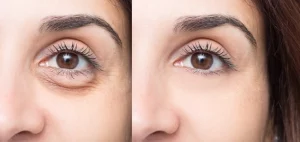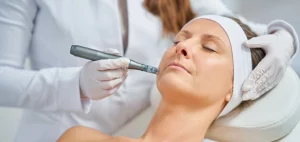Hair loss is a prevalent issue affecting millions of individuals, prompting them to seek effective solutions. Among the well-researched treatments available, Minoxidil and Finasteride stand out as popular choices. Each treatment offers distinct benefits and operates through different mechanisms, necessitating a thorough understanding of their nuances, including potential side effects and their efficacy in addressing various types of hair loss.
Choosing between Minoxidil and Finasteride depends largely on individual circumstances and preferences. While Minoxidil is applied topically and promotes hair growth by enhancing blood flow to the scalp, Finasteride works by reducing the hormone dihydrotestosterone (DHT), which contributes to hair loss in genetically predisposed individuals.
If you’re in NYC and looking to explore additional cosmetic treatments beyond hair restoration, considering best Botox treatments in Manhattan, NYC could complement your quest for enhancing appearance and confidence.
A Brief Overview of Minoxidil
Minoxidil, originally developed as a medication to treat high blood pressure, unexpectedly revealed its ability to promote hair regrowth. Applied topically, it works by widening blood vessels, increasing blood flow to hair follicles, and stimulating hair growth.
A Brief Overview of Finasteride
Initially developed to treat enlarged prostate glands, Finasteride operates by inhibiting the conversion of testosterone into dihydrotestosterone (DHT), a hormone responsible for shrinking hair follicles and causing hair loss. By reducing DHT levels, Finasteride helps prevent further hair loss and encourages regrowth.
Minoxidil vs Finasteride
Minoxidil and Finasteride are both effective treatments for hair loss but work through different mechanisms.
Minoxidil is a topical solution that stimulates hair follicles that are suitable for both men and women.
Finasteride is an oral medication that reduces DHT levels and is primarily used for male pattern baldness.
Minoxidil can cause scalp irritation, while oral finasteride treatment may lead to sexual dysfunction.
They both are FDA-approved medications for treating male pattern hair loss.
What Are the Side Effects?
Both Minoxidil and Finasteride have their own set of possible side effects that users should monitor closely.
- Decreased libido
- Erectile dysfunction
- Headache
- Chills
- Ejaculation issues
- Post- finasteride syndrome
- Testicular pain
- Heart palpitations
- Rash
- Swelling in your hands or feet
- Diarrhea
- Sneezing
- Inverted nipple
- Rapid weight gain
- Depression
- Erythema
- Dizziness
- Back pain
- Low blood pressure
- Breast enlargement
- Semen volume
- Tachycardia
- Chest pain
- Weight gain
- Hair texture changes
- Acne
- Flushing
- Scalp irritation
- Swelling of face
- Fluid retention
- Heart issues
- Nausea
- Hair shedding
- Unwanted hair growth
Medical Uses
– Minoxidil
- Androgenetic Alopecia
Also known as male or female pattern baldness, it is the most common type of hair loss. Topical minoxidil is applied topically to the scalp and can help stimulate hair growth and slow balding.
- Alopecia Areata
An autoimmune condition where hair is lost in patches. While not always effective, Minoxidil can be used off-label to promote hair regrowth.
- Other Types of Hair Loss
Minoxidil may also be used for other conditions leading to hair loss, though its effectiveness varies.
– Finasteride
- Male Pattern Baldness (Male Androgenetic Alopecia)
It is approved to treat hair loss in men by preventing the conversion of testosterone to dihydrotestosterone (DHT), a hormone that causes hair follicles to shrink.
- Benign Prostatic Hyperplasia (BPH)
Finasteride is also prescribed to treat BPH, a condition in which the prostate gland is enlarged, causing urinary problems. It helps reduce prostate size and alleviates symptoms.
Who Can Use the Hair Growth Treatment?
Minoxidil is suitable for a broader range of individuals, including both men and women. However, Finasteride is not recommended for women, especially those who are pregnant or planning to conceive, due to its potential to cause birth defects in male fetuses.
What You Need to Know About Dosage?
Minoxidil should be applied topically twice daily (1 ml of solution or half a capful of foam), while Finasteride is taken orally as a 1 mg tablet once daily. Consistency is crucial for both treatments, and results may take several months to appear.
What Should You Avoid While Using It?
When using Minoxidil, it’s advisable to avoid applying other topical products immediately after application to prevent interference with absorption. No specific restrictions apply to Finasteride usage.
What Are the Restrictions?
Individuals with certain medical conditions or allergies to any ingredients in Minoxidil or Finasteride formulations may not be suitable candidates for these treatments. Consulting a healthcare professional before starting either treatment is essential.
How to Use Finasteride or Minoxidil?
Minoxidil should be applied directly to the scalp and gently massaged in, while Finasteride tablets are taken orally with water, typically at the same time each day.
How Much Does it Cost?
Cost considerations may influence treatment choice, with Minoxidil generally being more affordable than Finasteride, especially over the long term.
Which Topical Treatment is Better?
Both topical Minoxidil and Finasteride have demonstrated effectiveness in promoting hair regrowth and preventing further loss. However, individual responses may vary, and one tropical treatment may be preferred over the other based on factors like personal preference and tolerability.
Oral vs Topical Finasteride
Oral finasteride lowers DHT levels in your body. On the other hand, topical finasteride only reduces DHT levels in the scalp.
In this case, topical finasteride may give you the advantages of the medication while overcoming the risk of sexual side effects.
Finasteride vs Minoxidil Results
Users of both Finasteride and Minoxidil have reported significant improvements in hair growth and thickness. Before-and-after photos often showcase visible results of a hair loss treatment journey, though individual experiences may differ.
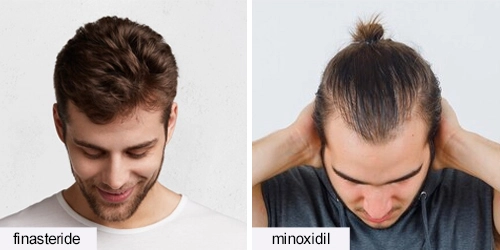
Finasteride and Minoxidil Before and After
These treatments have shown remarkable transformations in many users, with noticeable improvements in hair density and overall appearance over time.
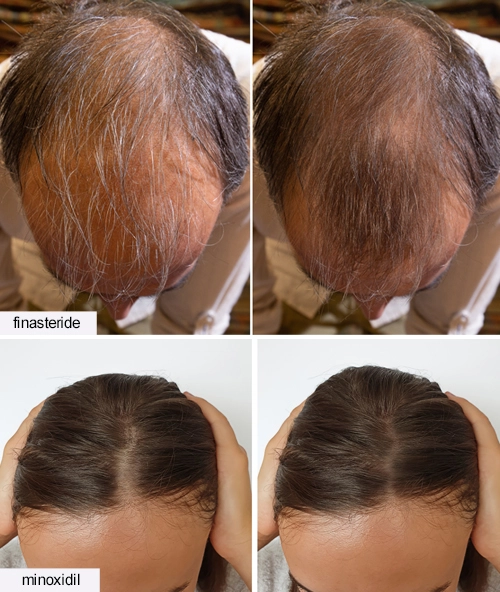
1-Year Finasteride Results
For individuals using Finasteride, substantial improvements in hair growth and density are typically observed after consistent use for at least one year.
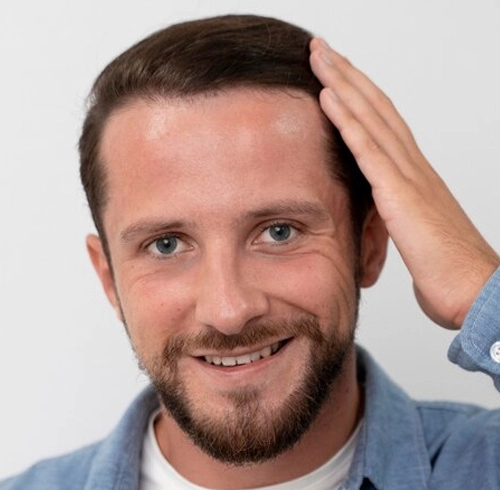
2 Month Minoxidil Beard Results
Minoxidil’s effectiveness in promoting beard growth is often evident within just two months of regular use, with many users reporting increased density and thickness.
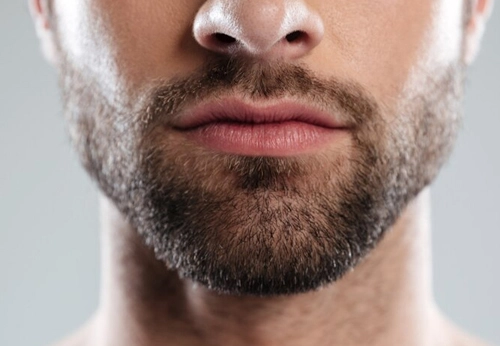
The Final Verdict: Minoxidil vs Finasteride
Choosing between Minoxidil and Finasteride depends on individual preferences, medical history, and the advice of healthcare professionals to treat hair loss. Both treatments have their pros and cons, and the decision should be made after careful consideration.
Where Can You Get Hair Loss Consultation in NYC?
For professional guidance and personalized treatment plans, consider consulting with experts like Syra Aesthetics in New York City, who specialize in hair loss solutions and can offer tailored recommendations based on your unique needs.
Propecia vs Minoxidil
Propecia, a brand name for Finasteride, and Minoxidil are both effective but work differently. Propecia is typically more effective in preventing further hair loss, while Minoxidil is excellent for promoting new hair growth. Combining both treatments is often recommended for optimal results, but always consult with a healthcare professional before treating hair loss.
Frequently Asked Questions
Should I start minoxidil or finasteride first in male pattern baldness?
It’s advisable to start with Finasteride first if you have male pattern baldness, as it addresses the root cause by reducing DHT levels. Finasteride is typically more effective in preventing further hair loss. Minoxidil can be added later to promote hair growth and complement Finasteride’s effects.
Are minoxidil and finasteride better together?
Using Minoxidil and Finasteride together can provide better results for many people, as they address hair loss through different mechanisms. Minoxidil stimulates hair growth directly, while Finasteride reduces the hormone that causes hair loss. Always consult with a healthcare provider before combining treatments.
Can finasteride lower testosterone?
Finasteride does not lower overall testosterone levels but reduces the conversion of testosterone to dihydrotestosterone (DHT). Lowering DHT levels helps prevent hair follicle shrinkage. It primarily affects hair loss rather than testosterone levels.
Does finasteride regrow the hairline or hair follicles?
Finasteride can help to slow down or stop hair loss by inhibiting the production of dihydrotestosterone (DHT), which is responsible for miniaturizing hair follicles in male pattern baldness. While it may promote some regrowth and prevent further hair loss, its effectiveness in regrowing hair at the hairline can vary among individuals. For some, it may lead to modest regrowth, but it’s not guaranteed to fully restore a receded hairline.
How many years of balding can finasteride reverse?
Finasteride is most effective when used early in the hair loss process, typically within the first 5 years. It can help regrow some lost hair and prevent further loss, but its ability to reverse balding diminishes with longer periods of hair loss.
What happens after 1 month of finasteride?
After one month of using Finasteride, most users do not see significant changes, as it generally takes three to six months to notice improvements. Some users might experience initial shedding, which can indicate the treatment is starting to work. Patience and consistency are key.
Why is Finasteride recommended as the first treatment vs Minoxidil?
Finasteride is often recommended first because it effectively reduces DHT, the primary cause of male pattern baldness. It is particularly effective in maintaining existing hair and slowing hair loss progression. Minoxidil is more frequently used as a secondary treatment to stimulate hair growth.
What causes male pattern hair loss?
Male pattern hair loss is primarily caused by a combination of genetic factors and hormonal changes, specifically the hormone dihydrotestosterone (DHT). DHT miniaturizes hair follicles, leading to hair thinning and eventual loss. This process typically follows a predictable pattern, starting with hairline recession and thinning at the crown.

About The Author
Dr. Syra Hanif M.D.
Board Certified Primary Care Physician
Dr. Hanif is the Director of Aesthetic Medicine. She is a board-certified physician in Aesthetic Medicine who specializes in using non-surgical alternatives in order to enhance one's appearance through Botox and fillers.
Read More









